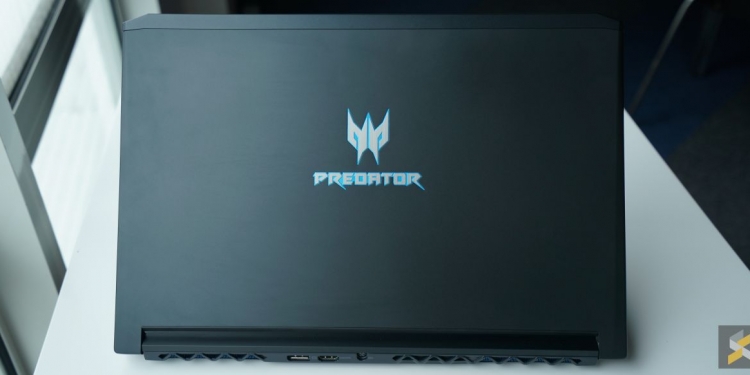You can’t have your cake and eat it too. For the most part, life is a barter trade where luxury demands hard work, perfection necessitates dedication, and power requires sacrifice. It’s a humbling principle that basically reminds you that you can’t have it both ways.
This is primarily the reason why purebred high-end gaming laptops never really interested me. Sure, they had all the power in the world but because of these high-powered components, the laptops needed to be enormous so those components could breathe.
There was no such thing as a no-compromise gaming laptop that was also super portable. Well, at least I didn’t think there was until I saw the Acer Predator Triton 700.
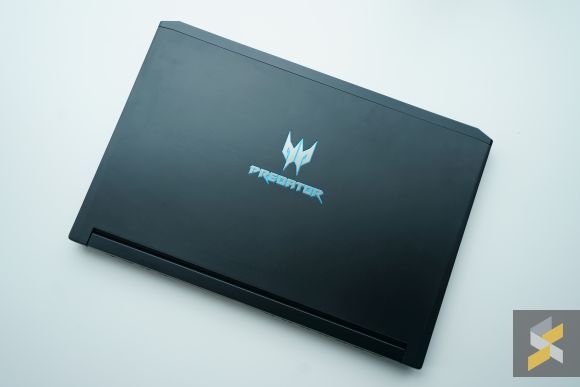
On paper, it looked like the ultimate purebred no-compromise gaming laptop that you could also carry around with you without the risk of breaking your back. And all of this was possible thanks to NVIDIA’s Max-Q design GPUs.
If you’re unfamiliar with it, Max-Q basically allows some of the most powerful NVIDIA GeForce GTX graphics cards to fit and function in a laptop chassis that is thinner than 2cm.
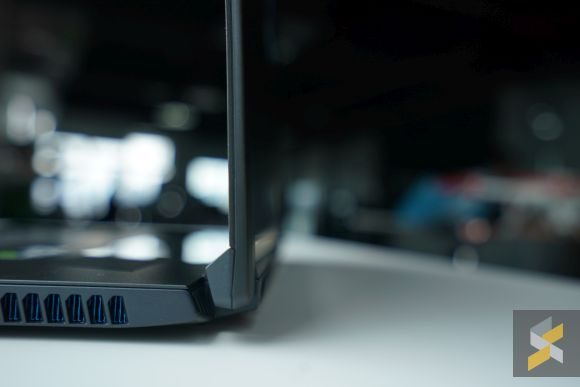
Of course, before Max-Q there were proper gaming laptops that were portable like the Razer Blade, but those only topped out at a GTX 1060 graphics card. Max-Q allows cards even up to an NVIDIA GeForce GTX 1080! Granted, these Max-Q GPUs aren’t full-fledged desktop cards, but they’re still powerful enough to slay triple A titles.
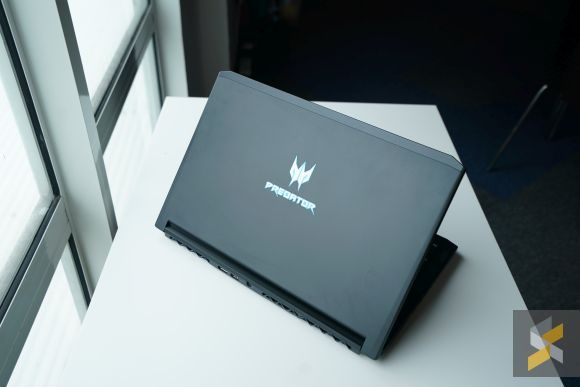
Acer’s Predator Triton 700 is one of the first devices to feature this Max-Q design and when I saw it I was pretty stoked. It looked like there was finally a laptop for someone like me who likes to play video games but also needed to bring my laptop with me for work.
However, after spending a little over two weeks with it, what I discovered was that the Triton 700 wasn’t this stars-aligned-perfect-gaming-laptop-plus-mobile-workstation. It was still a purebred gaming laptop through and through.
But the thing is, it’s just so good at being a proper gaming laptop while also being much more portable than the other laptops of its calibre that maybe it doesn’t matter that it isn’t the best of both worlds. Instead, it’s the best of one world while also being kinda good enough at the other.
[nextpage title=”What on earth are you talking about?”]
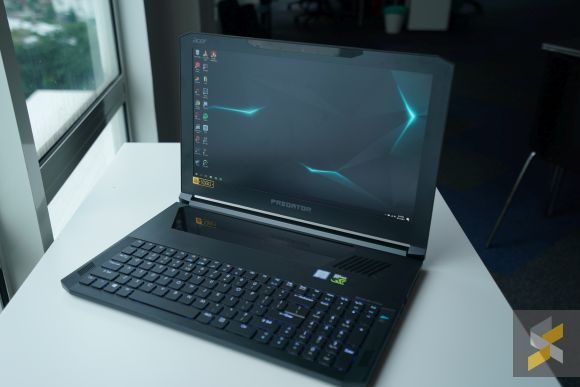
Let’s start with one of the most impressive things about this device: Performance. The model I have here is the top-of-the-line spec that features all the bells and whistles you can get with the Triton 700. This guy is powered by an Intel Core i7-7700HQ processor, 32GB of RAM, an NVIDIA GeForce GTX 1080 Max-Q design GPU with a 512GB NVMe SSD in RAID 0 (2x 256GB).
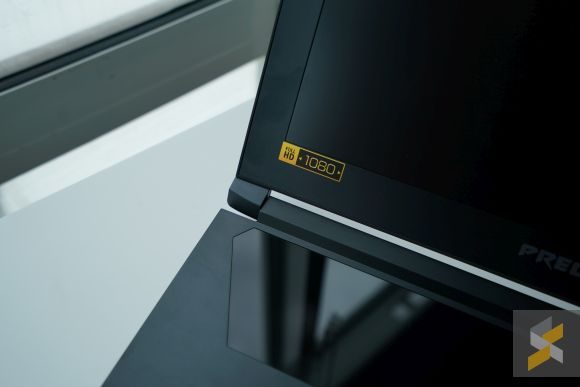
It also features the awesome 120Hz G-SYNC 15.6” Full HD IPS display, and the laptop absolutely murders games. It munched through triple A titles (like Battlefield 1 and Rise of the Tomb Raider) and eSports titles (League of Legends, Overwatch, PLAYERUNKNOWN’s BATTLEGROUNDS, StarCraft 2) on maxed settings very convincingly.
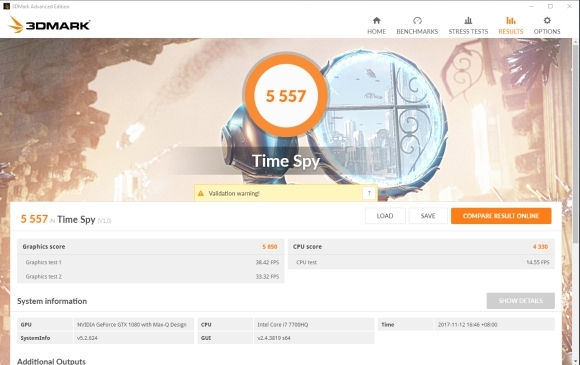
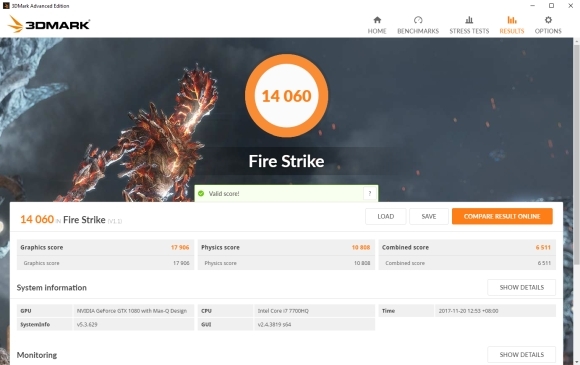
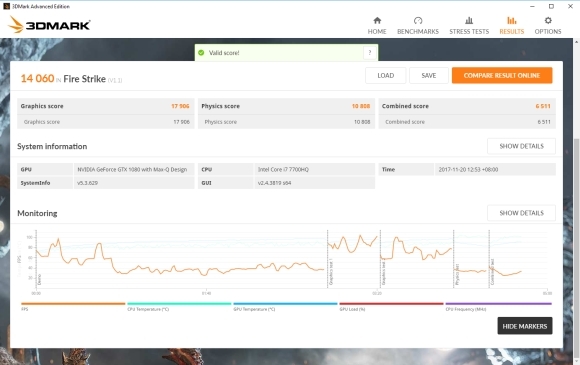
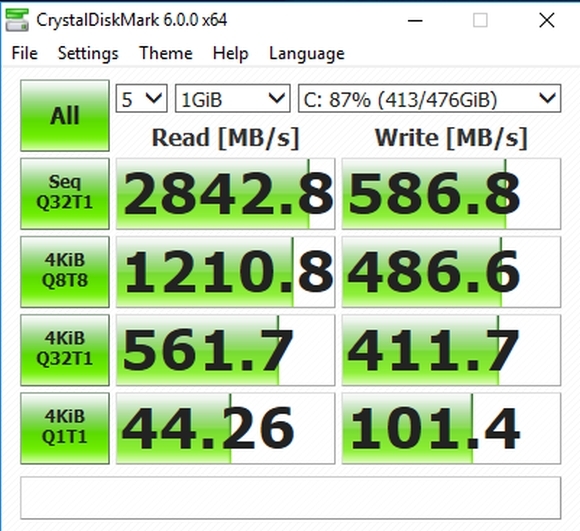
However, after extended gaming sessions — several hours — the laptop does get pretty hot, with mine maxing out at 91-degrees Celsius on the GPU and about 80-degrees on the CPU. That said, while the glass panel sitting right above the keyboard becomes a little too hot to touch, the keyboard doesn’t get uncomfortable.
Despite that, there wasn’t any noticeable thermal throttling in-game nor were there any dropped frames so I won’t give it too hard of a time for this one. I will note that when the fans start spinning up under load, they can get pretty loud. It’s not quite Predator 21X loud, but if you’re someone who games with open-backed headphones like I do, it’s kinda hard to ignore. Still, it is a high-performance gaming laptop so I guess this isn’t too surprising.
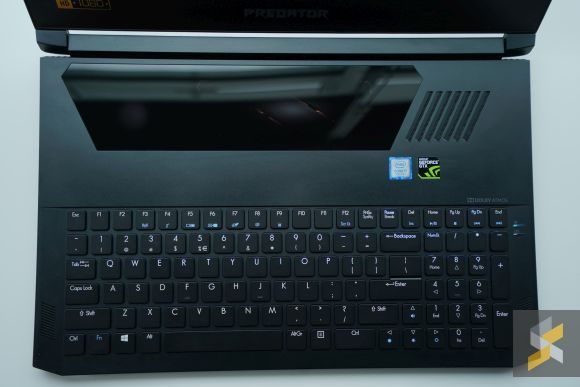
What did surprise me though, is the keyboard. It’s got a mechanical keyboard that I was not a big fan of the first time I typed on it. The chiclet keys are shallow and require quite a bit of force to actuate so it really threw me off as someone who likes Cherry MX Brown and Blue switches. The entire keyboard was also really close to the edge of the laptop which made me feel like they should have included a wrist rest as well.
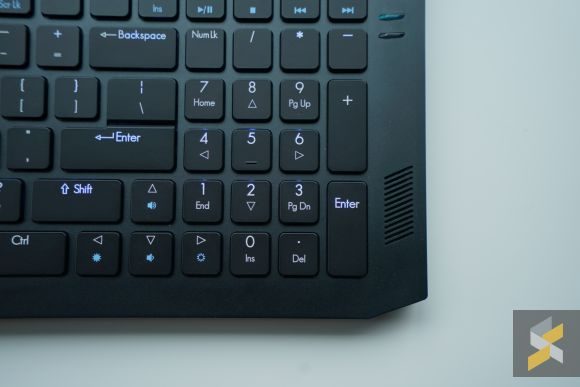
However, after the initial shock, I actually grew to like the keyboard. It became satisfying to type on — for a laptop keyboard — which was definitely nice for the kind of work I do. It’s not the most perfect laptop keyboard but for its class of device, I think Acer’s done a really good job here. I’m even OK with the shortened 0 key on the numpad because it means I get to have full-sized arrow keys.
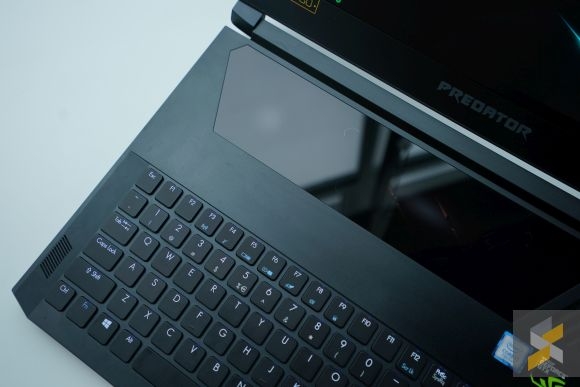
I just wish I could say the same thing about the Predator’s touchpad. You may already know by now, but if you don’t, Acer’s moved the touchpad to the top of the keyboard so it shares space with your fan’s glass window. Sure, it’s tracks well, it’s a good size and it uses Windows Precision Drivers, but because of where it is installed, the trackpad is just a nightmare to use.
Still, I understand that space was probably very limited when Acer designed this laptop so the trackpad position feels more forced than a conscious design choice. Besides, gamers will probably be using this with a mouse anyway.
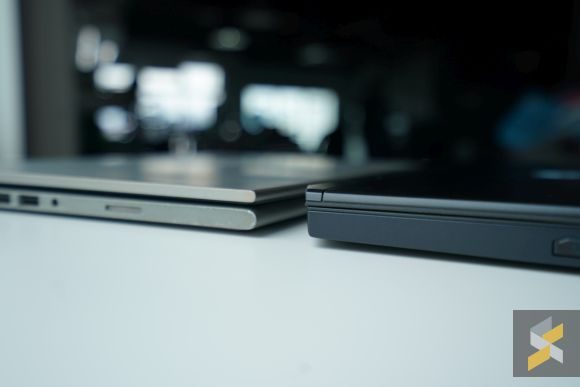
Coming in at just 18.9mm, this laptop is as slim as the Dell Inspiron 13 7000 that I carry around as a daily driver, which is amazing for a gaming laptop. The Triton 700 is also pretty light as far as top-end gaming laptops go. Weighing just 2.39kg, it’s a mere smidgen compared to many of the other behemoths that occupy this space in the gaming laptop market, yet it doesn’t feel flimsy like ASUS’s ROG Zephyrus GX501 Max-Q laptop does.
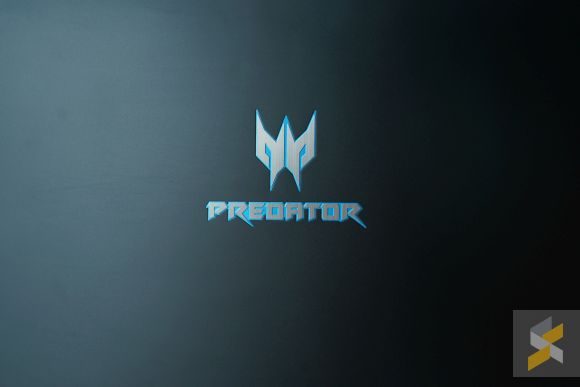
Acer’s Triton 700 feels properly built with a nice metal body that hardly has any flex to it considering how thin this device is. It feels quite premium with a solid hinge and restrained good looks.
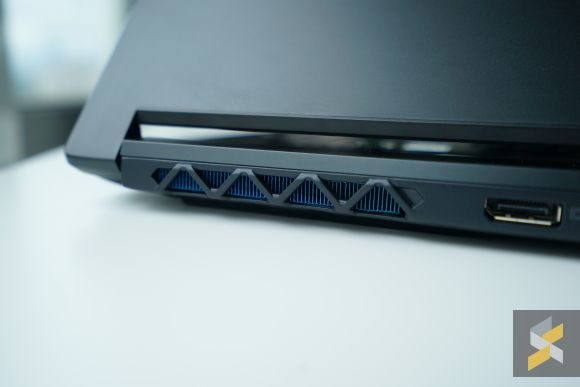
You can’t really tell it’s a gaming laptop either except for the Predator logo on the lid. They even went for a cool light blue plus really dark navy colour scheme for the laptop instead of a garish red or orange that many other brands prefer.
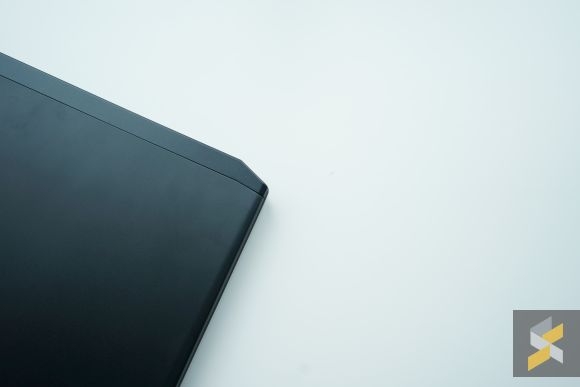
However, I should inform you of something I noticed with my review unit that you should definitely look out for before you buy a Triton 700. Make sure the RGB lighting on the keyboard is uniform because the ones on my review unit were very inconsistent.
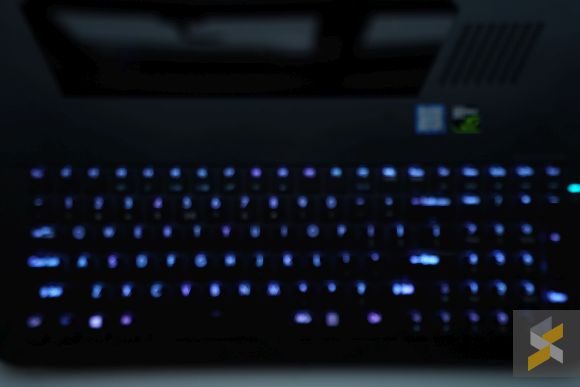
As you can see from this photo, I’ve set the entire keyboard’s backlighting to blue but the keys aren’t all the same colour. F8, F9, and F10 along with a few other keys, for example, are a dark purple instead. This is inconsistency also applies to yellow where those same keys show orange instead.
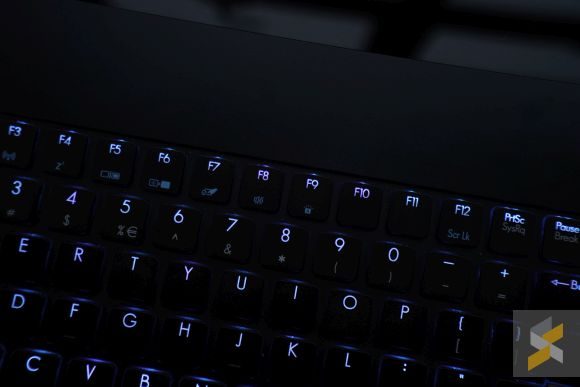
At first, I thought it was because I was using some pre-production unit but I was later assured that this is a retail unit. It’s not a dealbreaker or anything, but if you’re dropping this kind of cash on a gaming laptop I thought this might be something you’d like to know.
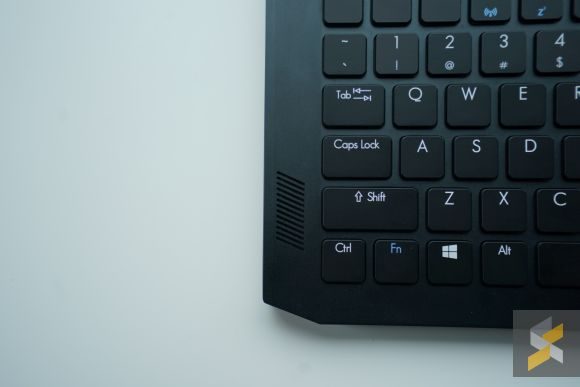
Getting back to the topic of portability, while I think the Triton 700’s weight and size is great for a well-built gaming laptop, it isn’t so great if you also want a device that you can carry around all day. First off, its footprint is really large for a 15.6” device.
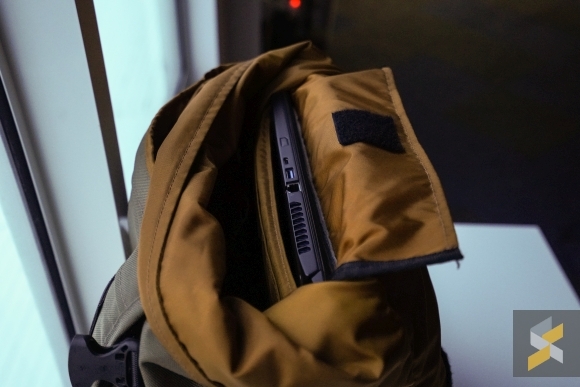
My bag’s laptop sleeve can fit up to a 15.6” laptop but because the Predator’s footprint is so huge, it doesn’t fit. Then, the 2.39kg weight is also pretty deceptive since that’s only the weight of the laptop. What you should also take into consideration is the weight of the enormous power brick. We weighed it and it weighs a whopping 1.13kg. That’s like carrying another ultrabook with you!
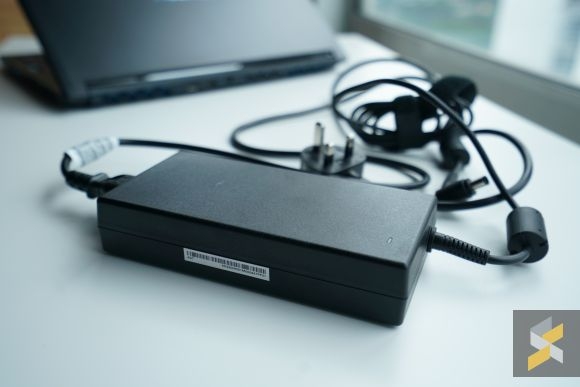
And the worst part is that you will have to bring this power brick with you if you want to work/play remotely because this device has pretty awful battery life. On average, I was only getting about two hours of use on a single charge (for work tasks, not even gaming) which means you’re pretty much going to have to be tethered to a power outlet all the time.
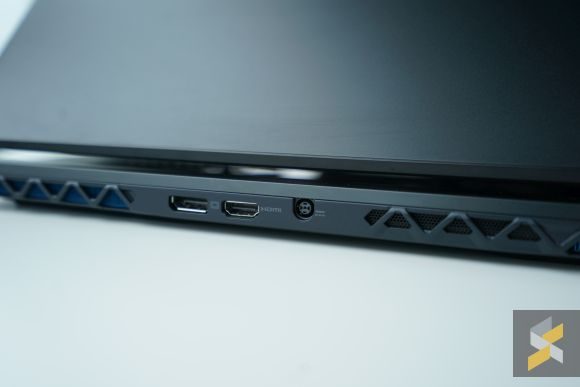
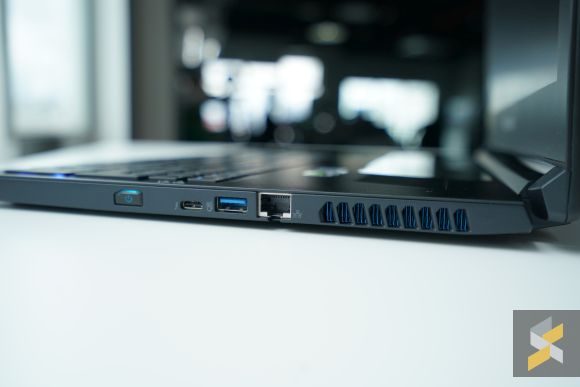
Thankfully, when you’re hooked up to a power source, the laptop works really well as a desktop replacement. It’s got all the power and a nice IPS panel with good viewing angles which is also pretty colour accurate as far as I can tell. What’s more, the Predator Triton 700 features a really solid set of I/O ports. You get 3 USB3.0 ports, a USB C Thunderbolt 3 port, an Ethernet port, a DisplayPort and a HDMI 2.0 port with HDCP support.
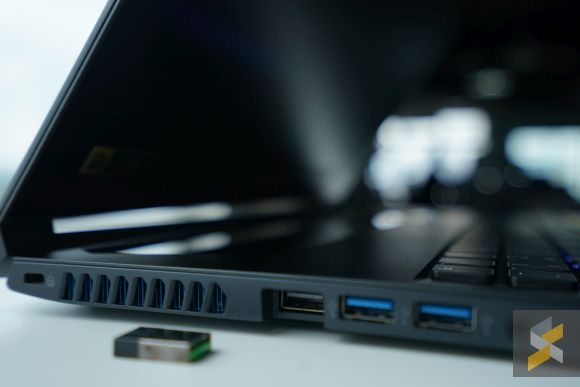
There’s also a recessed USB 2.0 port for you to stick your wireless mouse dongle in. It’s really nice because you can leave it there and it won’t get caught on anything when you stuff the laptop in your bag.
Unfortunately for me though, there’s no SD card slot. For someone whose workflow includes a lot of photography and videography, not having an SD card reader really sucks because I either need to pick up a card reader or transfer files via a USB cable (much slower).
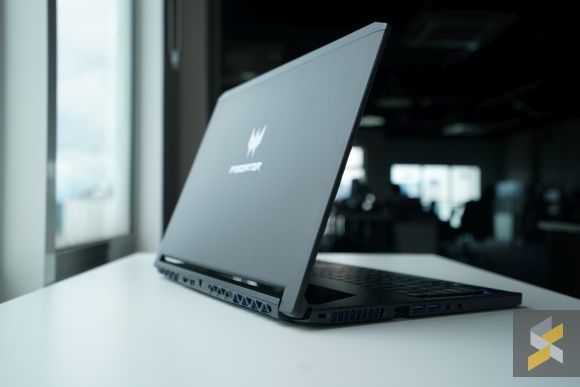
This means that at the end of the day, the Acer Predator Triton 700 is undeniably a gaming laptop — a proper thoroughbred, if you will. It’s not going to replace the Dell XPS 15s or Razer Blades of the world as a good middle ground between work and games so don’t go into buying this with the wrong mindset. You still can’t eat and have your cake.
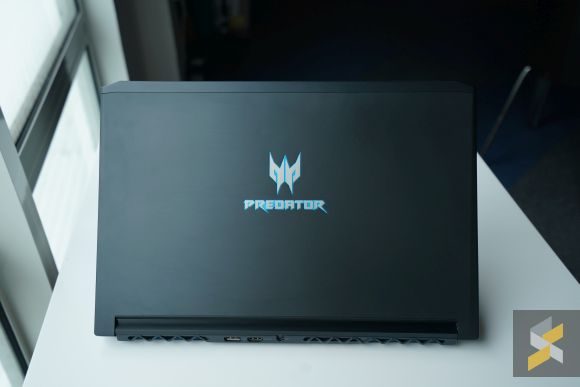
But, if you look at it as a gaming laptop, the Triton 700 is very nearly aces across the board. Great performance, good looks, great build and great beginner-friendly overclocking/RGB software (Predator Sense). And it’s so much more portable that the other high-end gaming laptops too! If there was one thing I’d ask for a better gaming experience — besides less noisy fans — it would be to have a better set of speakers. These are OK for laptop speakers, but it could definitely have been better.
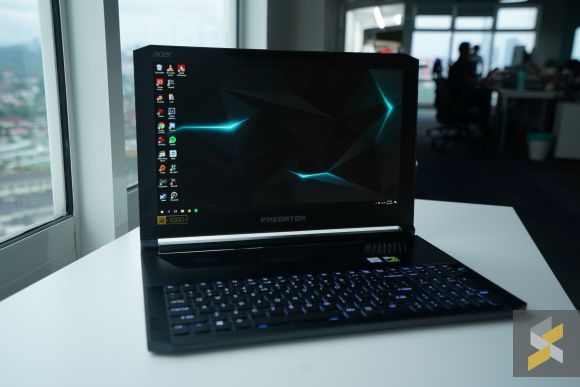
The Predator Triton 700 is also really good value when you consider the competition. This top-spec model is priced at RM13,999 and if you compare it to the ASUS ROG Zephyrus GX501 — currently the Predator’s closest competitor — the Triton 700 is RM2,000 cheaper. There’s even a more affordable variant that’s priced at RM9,999 but it loses the 120Hz screen, drops GPU to a GTX 1060, RAM to 16GB and storage to 256GB (128GB+128GB in RAID 0).
So yes, while this device doesn’t fulfill my needs as a workhorse + gaming laptop, it’s hard to deny how good this gaming laptop is. Sure, RM13,999 is a lot of money, but I think it is the best overall no-compromise gaming laptop I have ever used.

